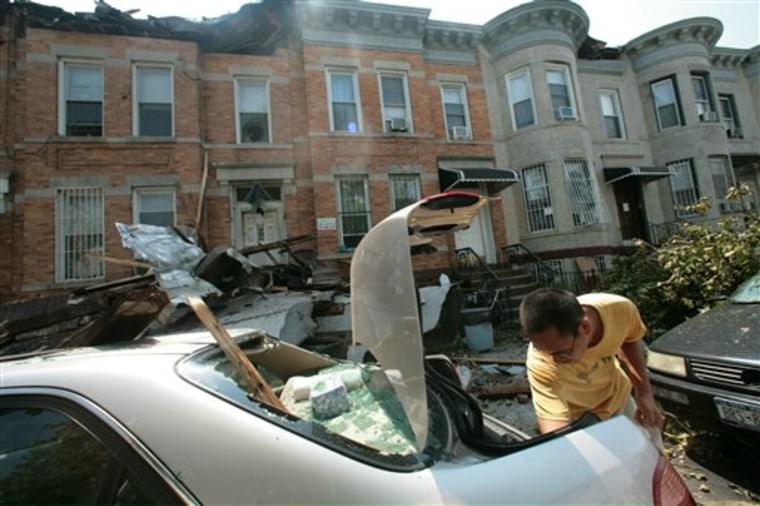Flooded subways? A tornado in Brooklyn? It was tempting to blame it all on global warming.
Plenty of public officials were doing just that in the aftermath of a short but violent thunderstorm that paralyzed the nation's largest mass transit network and tore the roofs off limestone townhouses. But in reality, it is not quite that simple, weather and climate experts say.
The storm, which gathered strength over Pennsylvania, drenched New Jersey and then pounded the city at sunrise Wednesday was strong but not particularly rare for a hot summer day, said Jeff Warner, a meteorologist at Pennsylvania State University.
Climate scientist James Hansen, director of NASA's Goddard Institute of Space Studies, agreed: "You cannot blame a single specific event, such as this week's storm, on climate change," he said.
"However," he added, "it is fair to ask whether the human changes have altered the likelihood of such events. There the answer seems to be 'yes.'"
More fuel around
Storms, Hansen explained, are fueled by heat and moisture, and our atmosphere is becoming warmer and more humid.
And that, other experts said, has tended to mean more rain and rain that is more intense.
Plenty of Brooklynites were thinking global warming. What else could be to blame for an honest-to-goodness twister in a place where the word "cyclone" usually means the roller coaster on Coney Island?
The city's top water and sewer official, Department of Environmental Protection Commissioner Emily Lloyd, said the deluge may be evidence that the region is seeing an increase in the type of intense storm cells that used to roll through only once every five or 10 years.
And as his crews pumped millions of gallons of water from submerged train tracks, Metropolitan Transportation Authority Executive Director Elliot Sander said: "We may be dealing with meteorological conditions that are unprecedented."
'Undeniable' numbers
Nationwide, total rainfall and snowfall increased by about 7 percent during the 20th century, and the precipitation falling in the heaviest 1 percent of storms increased by 20 percent, said Jay Lawrimore, chief of the climate monitoring branch at National Oceanic & Atmospheric Administration's National Climatic Data Center.
"It is undeniable that the heavy precipitation events that create flash flooding are becoming more common," Lawrimore said.
Climate scientists generally measure weather changes in decades or centuries, not years, and across vast regions, not individual cities.
But New Yorkers could be forgiven for being suspicious that something about the weather has changed recently.
"This is supposed to be a rainfall event that is a once-in-a-decade occurrence — we've had three in the past seven months," Gov. Eliot Spitzer said Thursday, after the tunnels had mostly dried out from the latest deluge. "We've got a serious issue to worry about."
